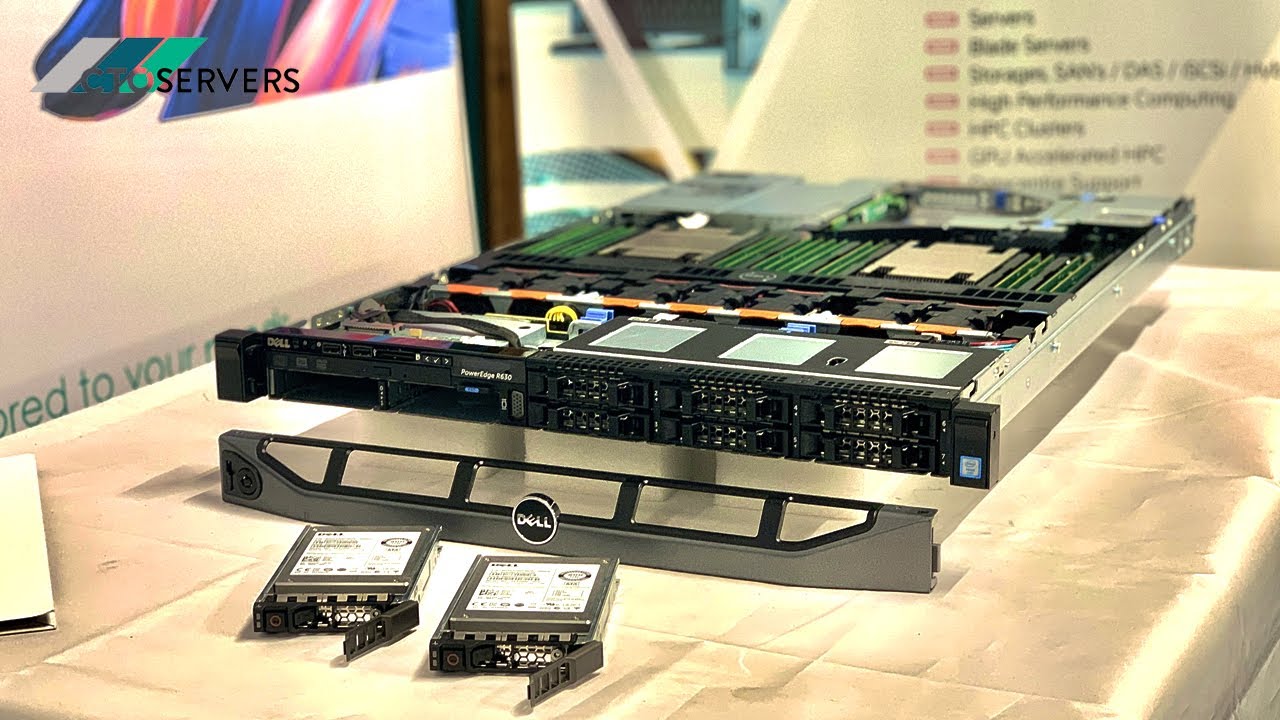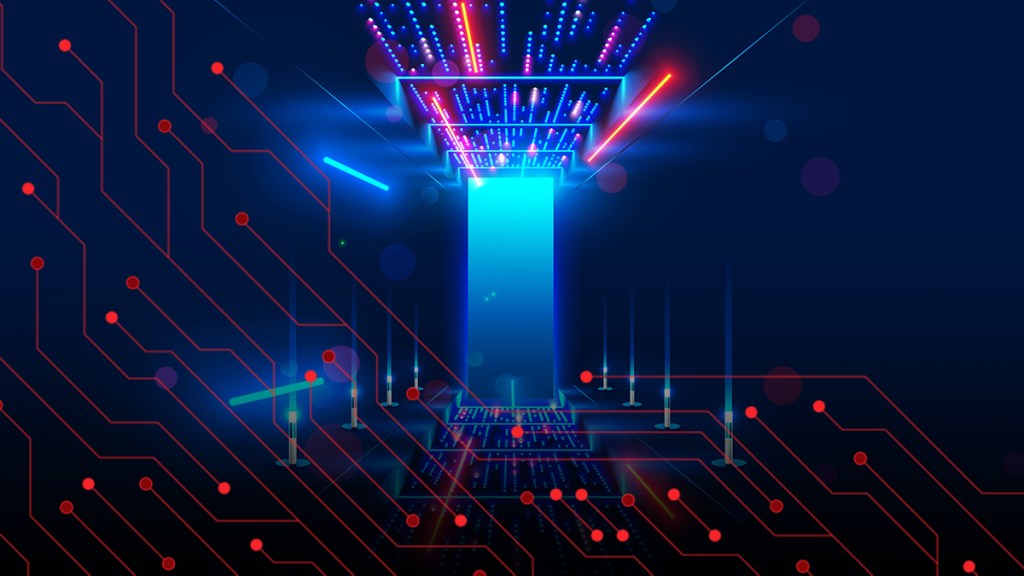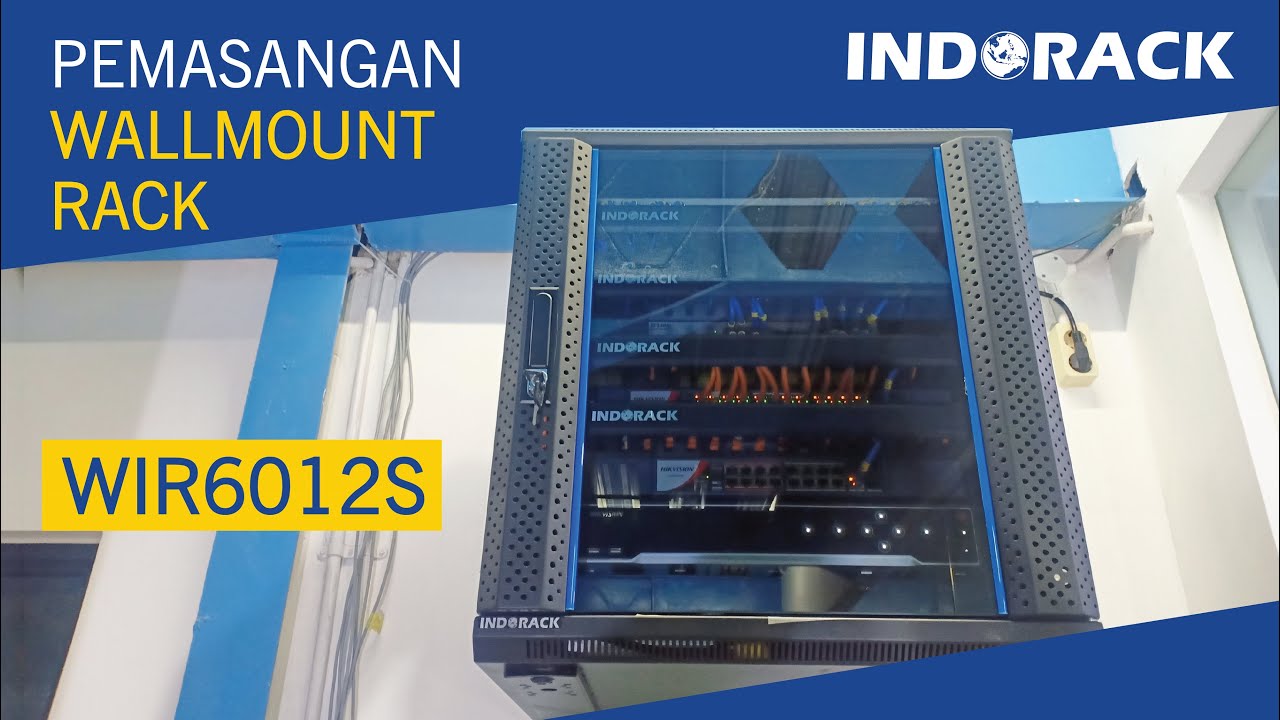California is going after ExxonMobil over what it calls a “campaign of deception” about plastic recycling.
Technology
Why California is suing ExxonMobil for ‘perpetuating the lie’ of plastic recycling

The Golden State filed suit against the oil giant this week, alleging that it has misled consumers for years by marketing recycling as a way to prevent plastic pollution. Plastic is difficult and relatively costly to recycle, and very little of it ever gets rehashed, but the industry sold recycling as a feasible solution anyway.
That’s why California wants to hold ExxonMobil accountable for the role it says the company played in filling landfills and waterways with plastic. Plastics are made with fossil fuels, and California says ExxonMobil is the biggest producer of single-use plastic polymers.
California wants to hold ExxonMobil accountable
ExxonMobil defended itself in an emailed response to The Verge, writing: “For decades, California officials have known their recycling system isn’t effective. They failed to act, and now they seek to blame others. Instead of suing us, they could have worked with us to fix the problem and keep plastic out of landfills.”
The Verge spoke with California Attorney General Rob Bonta about plastic recycling and the allegations California makes in the landmark lawsuit.
This interview has been lightly edited for length and clarity.
I think a lot of people around my age grew up thinking that recycling plastic is a good thing. Why go after ExxonMobil over recycling?
It’s a difficult confrontation of a truth, especially since ExxonMobil and others have been so successful at perpetuating the lie.
A 14-year-old who I met yesterday was just distraught over the fact that all of the plastic items that she carefully selected to make sure they have the chasing arrows on it and then make sure that after she used it, she placed it thoughtfully and diligently in the blue container for recycling — that 95 percent of the time, that item was not recycled. Instead, it went into the landfill, the environment, or incinerated. And so she was having a hard time, and I’m sure she’s not alone, and others will have the same difficulty getting their head around the actual truth.
It’s really important for us, in my view, to confront problems. You need to face problems to fix them. One of them is a major problem created by ExxonMobil. They have perpetuated the myth of recycling. They have been engaged in a decadelong campaign of deception in which they have tried to convince the public that recycling of plastics, including single-use plastics, is sustainable when it’s not. When they know that only 5 percent is recycled [in the US].
Why would they say that if they knew that it wasn’t true? Well, because it increases their profits. It makes people buy more. If people buy plastics and believe that no matter how much they use, how frequently they use it, if they engage in a single-use throwaway lifestyle, they’re still being good stewards of the environment because it’s all recyclable and will be reused again somewhere in someone else’s household as a plastic product — they’re much more likely to buy more. And that’s exactly what’s happened.
Your office says it “uncovered never-before-seen documents” as part of its investigation into the role fossil fuel companies play in causing plastic pollution. Can you give examples of what you found? Did anything surprise you?
What some of the new documents that have not been seen before really get at is this type of greenwashing by ExxonMobil called advanced recycling.
The documents reveal to us that this newest, latest, purportedly greatest form of recycling is neither advanced nor is it recycling. It’s an old technology. They basically heat the plastic so that it melts into its smallest component parts, and that’s been used before Exxon and Mobil merged. Each experimented with it and then decided to no longer pursue it.
And the process doesn’t actually recycle plastic into other plastic, which is what people think they mean when their plastic is being recycled. But 92 percent of what advanced recycling turns plastic waste into is transportation fuel and other chemicals and resins and materials. It’s mostly fuel for your car, fuel for your boat, fuel for your plane. It’s burned once and emitted into the air, into the environment. That is not recycling.
What would California get out of winning this case?
Right now, the harm to California from ExxonMobil’s lies and deception and the myth of recycling are a billion dollars a year in taxpayer-funded cleanup and damage in terms of the plastic pollution crisis that we’re facing.
Here are the things that we would get if we win this case, and we believe we will. We will get an injunction that says ExxonMobil can no longer lie and can no longer perpetuate the myth of recycling. That they need to tell the truth going forward — they can’t say that things can be recycled when they can’t.
We’ll also get an abatement fund, which will be funded by billions of dollars from ExxonMobil. It will pay for ongoing plastic pollution in California that harms our people, our environment, our natural resources. It will pay for a re-education campaign so that people can learn that recycling is only 5 percent of plastic waste, 95 percent is not recycled. It could also be used to further research on microplastics, which are invisible plastic particles that are in our bodies, in the air, in our food, in our water, and to see what the human impact is of that.
We’ll also get a disgorgement of profits, which means that any profits that were wrongly secured by ExxonMobil because of their lies would have to be turned over. We also have some civil penalties and some fees that we’re seeking.
You’re the first Filipino American attorney general in California, the state with the most FilAms in the US. I used to live in Long Beach, California, where there’s a big Southeast Asian community and also a lot of air pollution from all the vessel and truck traffic surrounding the port in that area. Does this ever get personal for you — the impact that pollution from oil and gas operations disproportionately has on immigrant communities?
My oldest daughter, when she was in high school, she came up to me and she said, “Dad is this weird?” She said, “My friends and I have been talking, and we decided that we don’t want to have kids because we don’t want to bring a new life into a dying planet.” And I will always remember that. That was a gut punch.
That one made me really think. It made me worry. It kept me up at night. It made me question whether we were on pace to fulfill our duty as elected officials, to pass on to the next generation a better society and world than we’ve had. I thought we might be certainly behind schedule and maybe at the risk of failing when it comes to protecting our climate and making sure that there’s a planet for tomorrow. So, that’s personal.
Our lived experiences, our values, drive us. But we will also always fulfill our duty, our ethical obligations, and make sure that we’re bringing cases that are strong and sound, based on facts and law. It’s consistent with my values, my lived experiences. The law and the facts all point in the same direction on this case.
Servers computers
Dell PowerEdge R630 (1u) Rack Server , Dual E5-2620 V3 , 128GB DDR4 , 400GB Enterprise class SSD's

One of our Configured to Order Solutions. Configured to our customers specifications ! For all your bespoke IT Hardware solutions at great prices , please contact : sales@ctoservers.co.uk
HPC Solutions for :
Computational science , mathematical and computational modelling and simulation , numerical analysis , quantum physics , Weather forecasting , weather simulation , Climatology , oil and gas exploration , Computational chemistry , Machine Learning , Deep Learning , medical imaging , structural mechanics , bioinformatics , Hyper-converged infrastructures , BIG DATA , Internet of Things (IoT), artificial intelligence ( AI ) , Engineering Simulation , Cloud Computing , Cluster HPC. ISCI , SAN , DATA Storage Solutions , Servers , Enterprise Hardware ,
Autodesk 3ds Max , Blender , Form-Z , Adobe Premiere Pro , Carrara , Autodesk Maya , Maxon Cinema 4D , Autodesk Softimage , Luxology Modo , Newtek Lightwave 3D , Rhino 5 , Revit 2017 , V-Ray , Mental Ray , Maxwell , Scanline , Software Renderer , Standard Renderer , Physical Renderer , Advanced Renderer , Kray , Cycles , Indigo , TopSolid , PowerMILL , WorkNC , HeeksCAD , Tebis , SprutCAM , I-DEAS , SolidCAM , T-FLEX CAD , Vericut , Fusion 360 , Autodesk Inventor , Autodesk Autocad , Autodesk HSM , Solidworks , CATIA V5 ,
Hewlett Packard Enterprise , HPE , HP , DELL EMC , DELL , IBM , Fujitsu , Supermicro #DELL #R630 #SERVER .
source
Technology
Google has its AI veteran back, and it only cost $2.7 billion

The AI rat race is more like a game of cat and mouse. Big companies are constantly chasing down and capturing bright minds that will push their AI forward. A good example has to deal with Google’s most recent major purchase. According to a report, Google paid $2.7 billion to get one of its best AI minds back.
The person in question is Noam Shazeer. He was one of the earliest employees of Google back in the year 2000. He became an influential force in Google’s development, but his tenure at the company ended just a few years ago. Back in 2021, he left the company. He left because Google didn’t want to release a chatbot that he developed.
Well, after leaving Google, he went and founded his own AI company. You might be familiar with Shazeer’s company, Character.ai.
Google paid $2.7 billion to get one of its top AI employees back
So, to clear up any confusion, Google didn’t write a $2 billion check for Shazeer to pocket. Rather, the company paid this gross amount to basically acquire Character.ai without actually buying the company. The money went toward licensing Character.ai’s technology. Also, it went towards getting Shazeer and his team to work at Google.
This “not-acquisition” will basically function like an acquisition, letting Google use Character.ai’s technology as if it were its own. Nipping the company’s CEO is the icing on the cake. This way, Google can basically control the company without having to go through the legal process of an acquisition.
However, this doesn’t mean that this deal is immune from the FTC. Whether Google owns the company or not, there’s always the chance that the FTC or some other regulatory body will see this as a thinly veiled acquisition.
Could Google get away with this?
This is similar to something that Microsoft did with a company called Inflection AI. It didn’t buy the company per se, rather, it just hired the mass majority of its employees and paid it $650 million to license its technology. It’s not an acquisition on paper, but it is in spirit, and it was enough for the FTC to open a probe into the company.
Google is already in hot water with the DOJ suing it in a massive antitrust lawsuit (it’s THIRD antitrust lawsuit in a year, mind you). One of the reasons why it’s in the hot seat is because of its tendency to throw its money around to get its way. Should the company really be pulling sneaky moves like these at this point? Only time will tell.
Technology
New California law will force companies to admit you don’t own digital content

California Governor Gavin Newsom has signed AB 2426, a new law that requires digital marketplaces to make clearer to customers when they are only purchasing a license to access media. The law will not apply to cases of permanent offline downloads, only to the all-too-common situation of buying digital copies of video games, music, movies, TV shows or ebooks from an online storefront. spotted the development, which could see marketplaces facing fines for false advertising in the state if they don’t use clear language to explain the limitations of what access entails. In other words, you won’t be seeing language like “buy” or “purchase” once the law takes effect in 2025.
The move to digital storefronts has raised new parallel concerns about ownership and preservation for media in the modern age. Ubisoft’s move to after the game’s servers shuttered is one of the most recent examples of how customers can suddenly lose access to media they felt they owned. The new California law won’t stop situations like The Crew‘s disappearance from happening, and it won’t stop those losses from hurting. But it does make clearer that ownership is a pretty rare and intangible thing for digital media.
Governor Newsom is having a busy week. He also signed the state’s “” bill yesterday and last week signed two bills with protections against , both living and deceased.
Servers computers
HP 10642 G1 – 19" Server Rack 42U Computer Cabinet

HP 10642 G1 – Complete 42U Server Rack Cabinet.
Call Toll Free 877-307-7225.
Website: www.global1resources.com
Ebay Store: global1resources .
source
Technology
Why countries are in a race to build AI factories in the name of sovereign AI

Join our daily and weekly newsletters for the latest updates and exclusive content on industry-leading AI coverage. Learn More
Now that AI has become a fundamentally important technology, and the world has gravitated toward intense geopolitical battles, it’s no wonder that “sovereign AI” is becoming a national issue.
Think about it. Would the U.S. allow the data it generates for AI to be stored and processed in China? Would the European Union want its people’s data to be accessed by big U.S. tech giants? Would Russia trust NATO countries to manage its AI resources? Would Muslim nations entrust their data for AI to Israel?
Nvidia has earmarked $110 million to help countries foster AI startups to invest in sovereign AI infrastructure, and plenty of countries are investing in AI infrastructure on their own. That’s some real money aimed at jumpstarting the world when it comes to embracing AI. The question becomes whether this discussion is a lot of thought leadership to enable a sales pitch, or whether nations truly need to embrace sovereign AI to be competitive with the rest of the world. Is it a new kind of arms race that makes sense for nations to pursue?
A wake-up call

Jensen Huang, CEO of Nvidia, pointed out the rise of “sovereign AI” during an earnings call in November 2023 as a reason for why demand is growing for Nvidia’s AI chips. The company noted that investment in national computer infrastructure was a new priority for governments around the world.
“The number of sovereign AI clouds is really quite significant,” Huang said in the earnings call. He said Nvidia wants to enable every company to build its own custom AI models.
The motivations weren’t just about keeping a country’s data in local tech infrastructure to protect it. Rather, they saw the need to invest in sovereign AI infrastructure to support economic growth and industrial innovation, said Colette Kress, CFO of Nvidia, in the earnings call.
That was around the time when the Biden administration was restricting sales of the most powerful AI chips to China, requiring a license from the U.S. government before shipments could happen. That licensing requirement is still in effect.
As a result, China reportedly began its own attempts to create AI chips to compete with Nvidia’s. But it wasn’t just China. Kress also said Nvidia was working with the Indian government and its large tech companies like Infosys, Reliance and Tata to boost their “sovereign AI infrastructure.”
Meanwhile, French private cloud provider Scaleway was investing in regional AI clouds to fuel AI advances in Europe as part of a “new economic imperative,” Kress said. The result was a “multi-billion dollar opportunity” over the next few years, she said.
Huang said Sweden and Japan have embarked on creating sovereign AI clouds.
“You’re seeing sovereign AI infrastructures, people, countries that now recognize that they have to utilize their own data, keep their own data, keep their own culture, process that data, and develop their own AI. You see that in India,” Huang said.
He added, “Sovereign AI clouds coming up from all over the world as people realize that they can’t afford to export their country’s knowledge, their country’s culture for somebody else to then resell AI back to them.”
Nvidia itself defines sovereign AI as “a nation’s capabilities to produce artificial intelligence using its own infrastructure, data, workforce and business networks.”
Keeping sovereign AI secure

In an interview with VentureBeat in February 2024, Huang doubled down on the concept, saying, “We now have a new type of data center that is about AI generation, an AI generation factory. And you’ve heard me describe it as AI factories. Basically, it takes raw material which is data, transforms it with these AI supercomputers and Nvidia builds and it turns them into incredibly valuable tokens. These tokens are what people experience on the amazing” generative AI platforms like Midjourney.
I asked Huang why, if data is kept secure regardless of its location in the world, does sovereign AI need to exist within the borders of any given country.
He replied, “There’s no reason to let somebody else come and scrape your internet, take your history, your data. And a lot of it is still locked up in libraries. In our case, it’s Library of Congress. In other cases, national libraries. And they’re digitized, but they haven’t been put on the internet.”
He added, “And so people are starting to realize that they had to use their own data to create their own AI, and transform their raw material into something of value for their own country, by their own country. And so you’re going to see a lot. Almost every country will do this. And they’re going to build the infrastructure. Of course, the infrastructure is hardware. But they don’t want to export their data using AI.”
The $110 million investment

Nvidia has earmarked $110 million to invest in AI startups helping with sovereign AI projects and other AI-related businesses.
Shilpa Kolhatkar, global head of AI Nations at Nvidia, gave a deeper dive on sovereign AI at the U.S.-Japan Innovation Symposium at Stanford University. The July event was staged by the Japan Society of Northern California and the Stanford US-Asia Technology Management Center.
Kolhatkar did the interview with Jon Metzler, a continuing lecturer at the Haas School of Business at the University of California, Berkeley. That conversation focused on how to achieve economic growth through investments in AI technology. Kolhatkar noted how Nvidia has transformed itself from a graphics company to a high-performance computing and AI company long before ChatGPT arrived.
“Lots of governments around the world are looking today at how can they capture this opportunity that AI has presented and they [have focused] on domestic production of AI,” Kolhatkar said. “We have the Arab nations program, which kind of matches the AI strategy that nations have in place today. About 60 to 70 nations have an AI strategy in place, built around the major pillars of creating the workforces and having the ecosystem. But it’s also around having already everything within the policy framework.”
AI readiness?

Nvidia plays a role in setting up the ecosystem and infrastructure, or supercomputers. The majority of Nvidia’s focus and its engineering efforts is in the software stack on top of the chips, she said. As a result, Nvidia has become more of a platform company, rather than a chip company. Metzler asked Kolhatkar to define how a country might develop “AI readiness.”
Kolhatkar said that one notion is to look at how much computing power a country has, in terms of raw AI compute, storage and the energy related to power such systems. Does it have a skilled workforce to operate the AI? Is the population ready to take advantage of AI’s great democratization so that the knowledge spreads well beyond data scientists?
When ChatGPT-3.5 emerged in Nov. 2022 and generative AI exploded, it signaled that AI was really finally working in a way that ordinary consumers could use to automate many tasks and find new information or create things like images on their own. If there were errors in the results, it could be because the data model wasn’t fed the correct information. Then it quickly followed that different regions had their own views on what was considered correct information.
“That model was trained primarily on a master data set and a certain set of languages in western [territories],” Kolhatkar said. “That is why the internationalization of having something which is sovereign, which is specific to a nation’s own language, culture and nuances, came to the forefront.”
Then countries started developing generative AI models that cater to the specificities of a particular region or particular nation, and, of course, the ownership of that data, she said.
“The ownership is every country’s data and proprietary data, which they realized should stay within the borders,” she said.
AI factories

Nvidia is now in the process of helping countries create such sovereign infrastructure in the form of “AI factories,” Kolhatkar said. That’s very similar to the drive that nations ignited with factories during the Industrial Revolution more than 100 years ago.
“Factories use raw materials that go in and then goods come out and that was tied to the domestic GDP. Now the paradigm is that your biggest asset is your data. Every nation has its own unique language and data. That’s the raw material that goes into the AI factory, which consists of algorithms, which consists of models and out comes intelligence,” she said.
Now countries like Japan have to consider whether they’re ahead or falling behind when it comes to being ready with AI factories. Kolhatkar said that Japan is leading the way when it comes to investments, collaborations and research to create a successful “AI nation.”
She said companies and nations are seriously considering how much of AI should be classified as “critical infrastructure” for the sake of economic or national security. Where industrial factories could create thousands of jobs in a given city, now data centers can create a lot of jobs in a given region as well. Are these AI factories like the dams and airports of decades ago?
“You’re kind of looking at past precedents from physical manufacturing as to what the multiplier might be for AI factories,” Metzler said. “The notion of AI factories as maybe civic infrastructure is super interesting.”
National AI strategies?

Metzler brought up the notion of the kind of strategies that can happen when it comes to the AI race. For instance, he noted that maybe smaller countries need to team up to create their own larger regional networks, to create some measure of sovereignty.
Kolhatkar said that can make sense if your country, for instance, doesn’t have the resources of any given tech giant like Samsung. She noted the Nordic nations are collaborating with each other, as are nations like the U.S. and Japan when it comes to AI research. Different industries or government ministries can also get together for collaboration on AI.
If Nvidia is taking a side on this, it’s in spreading the tech around so that everyone becomes AI literate. Nvidia has an online university dubbed the Deep Learning Institute for self-paced e-learning courses. It also has a virtual incubator Nvidia Inception, which has supported more than 19,000 AI startups.
“Nvidia really believes in democratization of AI because the full potential of AI can not be achieved unless everybody’s able to use it,” Kolhatkar said.
Energy consumption?

As for dealing with the fallout of sovereign AI, Metzler noted that countries will have to deal with sustainability issues in terms of how much power is being consumed.
In May, the Electric Power Research Institute (EPRI) released a whitepaper that quantified the exponential growth potential of AI power requirements. It projected that total data center power consumption by U.S. data centers alone could more than double to 166% by 2030.
It noted that each ChatGPT request can consume 2.9 watt-hours of power. That means AI queries are estimated to require 10 times the electricity of traditional Google queries, which use about 0.3 watt-hours each. That’s not counting emerging, computation-intensive capabilities such as image, audio and video generation, which don’t have a comparision precedent.
EPRI looked at four scenarios. Under the highest growth scenario, data center electricity usage could rise to 403.9 TWh/year by 2030, a 166% increase from 2023 levels. Meanwhile, the low growth scenario projected a 29% increase to 196.3 TWh/year.
“It’s about the energy efficiency, sustainability is pretty top of mind for everyone,” Kolhatkar said.
Nvidia is trying to make each generation of AI chip more power efficient even as it makes each one more performant. She also noted the industry is trying to create and use sources of renewable energy. Nvidia also uses its output from AI, in the form of Nvidia Omniverse software, to create digital twins of data centers. These buildings can be architected with energy consumption in mind and with the notion of minimizing duplicative effort.
Once they’re done, the virtual designs can be built in the physical world with a minimum of inefficiency. Nvidia is even creating a digital twin of the Earth to predict climate change for decades to come. And the AI tech can also be applied to making physical infrastructure more efficient, like making India’s infrastructure more resistant to monsoon weather. In these ways, Kolhatkar thinks AI can be used to “save the world.”
She added, “Data is the biggest asset that a nation has. It has your proprietary data with your language, your culture, your values, and you are the best person to own it and codify it into an intelligence that you want to use for your analysis. So that is what sovereignty is. That is at the domestic level. The local control of your assets, your biggest asset, [matters].”
A change in computing infrastructure

Computers, of course, don’t know national borders. If you string internet cables around the world, the information flows and a single data center could theoretically provide its information on a global basis. If that data center has layers of security built in, there should be no worry about where it’s located. This is the notion of the advantage of computers of creating a “virtual” infrastructure.
But these data centers need backups, as the world has learned that extreme centralization isn’t good for things like security and control. A volcanic eruption in Iceland, a tsunami in Japan, an earthquake in China, a terrorist attack on infrastructure or possible government spying in any given country — these are all reasons for having more than one data center to store data.
Besides disaster backup, national security is another reason driving each country to require their own computing infrastructure within their borders. Before the generative AI boom, there was a movement to ensure data sovereignty, in part because some tech giants overreached when it came to disintermediating users and their applications that developed personalized data. Data best practices resulted.
Roblox CEO Dave Baszucki said at the Roblox Developer Conference that his company operates a network of 27 data centers around the world to provide the performance needed to keep its game platform operating on different computing platforms around the world. Roblox has 79.5 million daily active users who are spread throughout the world.
Given that governments around the world are coming up with data security and privacy laws, Roblox might very well have to change its data center infrastructure so that it has many more data centers that are operating in given jurisdictions.
There are 195 nation states in the world, and if the policies become restrictive, a company might conceivably need to have 195 data centers. Not all of these divisions are parochial. For instance, some countries might want to deliberately reduce the “digital divide” between rich nations and poor ones, Kolhatkar said.
There’s another factor driving the decentralization of AI — the need for privacy. Not only for the governments of the world, but also for companies and people. The celebrated “AI PC” trend of 2024 offers consumers personal computers with powerful AI tech to ensure the privacy of operating AI inside their own homes. This way, it’s not so easy for the tech giants to learn what you’re searching for and the data that you’re using to train your own personal AI network.
Do we need sovereign AI?

Huang suggested that countries perceive it as needed so that a large language model (LLM) can be built with knowledge of local customs. As an example, Chernobyl is spelled with an “e” in Russian. But in Ukraine, it’s spelled “Chornobyl.” That’s just a small example of why local customs and culture need to be taken into account for systems used in particular countries.
Some people are concerned about the trend as it drives the world toward more geographic borders, which in the case of computing, really don’t or shouldn’t exist.
Kate Edwards, CEO of Geogrify and an expert on geopolitics in the gaming industry, said in a message, “I think it’s a dangerous term to leverage, as ‘sovereignty’ is a concept that typically implies a power dynamic that often forms a cornerstone of nationalism, and populism in more extreme forms. I get why the term is being used here but I think it’s the wrong direction for how we want to describe AI.”
She added, “‘Sovereign’ is the wrong direction for this nomenclature. It instantly polarizes what AI is for, and effectively puts it in the same societal tool category as nuclear weapons and other forms of mass disruption. I don’t believe this is how we really want to approach this resource, especially as it could imply that a national government essentially has an enslaved intelligence whose purpose is to reinforce and serve the goals of maintaining a specific nation’s sovereignty — which is the basis for the great majority of geopolitical conflict.”
Are countries taking Nvidia’s commentary seriously or do they view it as a sales pitch? Nvidia isn’t the only company succeeding with the pitch.
AMD competes with Nvidia in AI/graphics chips as well as CPUs. Like Nvidia, it is seeing an explosion in demand for AI chips. AMD also continues to expand its efforts in software, with the acquisition of AI software firms like Nod.AI and Silo AI. AI is consistently driving AMD’s revenues and demand for both its CPUs and GPUs/AI chips.

Cerebras Systems, for instance, announced in July 2023 that it was shipping its giant wafer-size CPUs to the technology holding group G42, which was building the world’s largest supercomputer for AI training, named Condor Galaxy, in the United Arab Emirates.
It started with a network of nine interconnected supercomputers aimed at reducing AI model training time significantly, with a total capacity of 36 exaFLOPs, thanks to the first AI supercomputer on the network, Condor Galaxy 1 (CG-1), which had 4 exaFLOPs and 54 million cores, said Andrew Feldman, CEO of Cerebras, in an interview with VentureBeat. Those computers were based in the U.S., but they are being operated by the firm in Abu Dhabi. (That raises the question, again, of whether sovereign AI tech has to be located in the country that uses the computing power).
Now Cerebras has broken ground on a new generation of Condor Galaxy supercomputers for G42.
Rather than make individual chips for its centralized processing units (CPUs), Cerebras takes entire silicon wafers and prints its cores on the wafers, which are the size of pizza. These wafers have the equivalent of hundreds of chips on a single wafer, with many cores on each wafer. And that’s how they get to 54 million cores in a single supercomputer.
Feldman said, “AI is not just eating the U.S. AI is eating the world. There’s an insatiable demand for compute. Models are proliferating. And data is the new gold. This is the foundation.”
Source link
Servers computers
PROSES PEMASANGAN WALLMOUNT RACK YANG BAIK DAN KEREN – INDORACK

Apakah Anda masih kerepotan dengan kabel cctv Anda?
Ruangan jadi kurang enak dipandang.
Kerepotan mengakses perangkat?
Pantengin video ini yuk…
(Pemasangan cctv di salah satu perusahaan ternama di Indonesia)
……….
Katakan selamat tinggal kabel CCtv yang berantakan..
source
-

 Womens Workouts3 days ago
Womens Workouts3 days ago3 Day Full Body Women’s Dumbbell Only Workout
-

 News4 days ago
News4 days agoOur millionaire neighbour blocks us from using public footpath & screams at us in street.. it’s like living in a WARZONE – WordupNews
-

 News1 week ago
News1 week agoYou’re a Hypocrite, And So Am I
-

 Technology1 week ago
Technology1 week agoWould-be reality TV contestants ‘not looking real’
-

 Sport1 week ago
Sport1 week agoJoshua vs Dubois: Chris Eubank Jr says ‘AJ’ could beat Tyson Fury and any other heavyweight in the world
-

 Science & Environment1 week ago
Science & Environment1 week agoITER: Is the world’s biggest fusion experiment dead after new delay to 2035?
-

 Science & Environment1 week ago
Science & Environment1 week agoMaxwell’s demon charges quantum batteries inside of a quantum computer
-

 Science & Environment1 week ago
Science & Environment1 week agoHow to wrap your mind around the real multiverse
-

 Science & Environment1 week ago
Science & Environment1 week agoSunlight-trapping device can generate temperatures over 1000°C
-

 Science & Environment1 week ago
Science & Environment1 week ago‘Running of the bulls’ festival crowds move like charged particles
-

 Science & Environment1 week ago
Science & Environment1 week agoHow to unsnarl a tangle of threads, according to physics
-

 Science & Environment1 week ago
Science & Environment1 week agoLiquid crystals could improve quantum communication devices
-

 Science & Environment1 week ago
Science & Environment1 week agoQuantum ‘supersolid’ matter stirred using magnets
-

 Science & Environment1 week ago
Science & Environment1 week agoHyperelastic gel is one of the stretchiest materials known to science
-

 Science & Environment1 week ago
Science & Environment1 week agoWhy this is a golden age for life to thrive across the universe
-

 Science & Environment1 week ago
Science & Environment1 week agoPhysicists are grappling with their own reproducibility crisis
-

 CryptoCurrency1 week ago
CryptoCurrency1 week agoCardano founder to meet Argentina president Javier Milei
-

 News1 week ago
News1 week agoIsrael strikes Lebanese targets as Hizbollah chief warns of ‘red lines’ crossed
-

 CryptoCurrency1 week ago
CryptoCurrency1 week agoDZ Bank partners with Boerse Stuttgart for crypto trading
-

 CryptoCurrency1 week ago
CryptoCurrency1 week agoEthereum is a 'contrarian bet' into 2025, says Bitwise exec
-

 Womens Workouts6 days ago
Womens Workouts6 days agoEverything a Beginner Needs to Know About Squatting
-

 Science & Environment1 week ago
Science & Environment1 week agoQuantum forces used to automatically assemble tiny device
-

 Science & Environment1 week ago
Science & Environment1 week agoNuclear fusion experiment overcomes two key operating hurdles
-

 CryptoCurrency1 week ago
CryptoCurrency1 week agoBitcoin miners steamrolled after electricity thefts, exchange ‘closure’ scam: Asia Express
-

 CryptoCurrency1 week ago
CryptoCurrency1 week agoDorsey’s ‘marketplace of algorithms’ could fix social media… so why hasn’t it?
-

 CryptoCurrency1 week ago
CryptoCurrency1 week agoRedStone integrates first oracle price feeds on TON blockchain
-

 CryptoCurrency1 week ago
CryptoCurrency1 week agoBitcoin bulls target $64K BTC price hurdle as US stocks eye new record
-

 News1 week ago
News1 week agoBrian Tyree Henry on voicing young Megatron, his love for villain roles
-

 CryptoCurrency1 week ago
CryptoCurrency1 week agoCoinbase’s cbBTC surges to third-largest wrapped BTC token in just one week
-

 Womens Workouts6 days ago
Womens Workouts6 days agoBest Exercises if You Want to Build a Great Physique
-

 Science & Environment4 days ago
Science & Environment4 days agoMeet the world's first female male model | 7.30
-

 Science & Environment1 week ago
Science & Environment1 week agoCaroline Ellison aims to duck prison sentence for role in FTX collapse
-

 Science & Environment1 week ago
Science & Environment1 week agoNerve fibres in the brain could generate quantum entanglement
-

 CryptoCurrency1 week ago
CryptoCurrency1 week agoCrypto scammers orchestrate massive hack on X but barely made $8K
-

 CryptoCurrency1 week ago
CryptoCurrency1 week agoLow users, sex predators kill Korean metaverses, 3AC sues Terra: Asia Express
-

 CryptoCurrency1 week ago
CryptoCurrency1 week ago‘No matter how bad it gets, there’s a lot going on with NFTs’: 24 Hours of Art, NFT Creator
-

 CryptoCurrency1 week ago
CryptoCurrency1 week agoSEC asks court for four months to produce documents for Coinbase
-

 Sport1 week ago
Sport1 week agoUFC Edmonton fight card revealed, including Brandon Moreno vs. Amir Albazi headliner
-

 CryptoCurrency1 week ago
CryptoCurrency1 week agoBlockdaemon mulls 2026 IPO: Report
-
Business1 week ago
How Labour donor’s largesse tarnished government’s squeaky clean image
-

 Technology1 week ago
Technology1 week agoiPhone 15 Pro Max Camera Review: Depth and Reach
-

 Womens Workouts6 days ago
Womens Workouts6 days agoKeep Your Goals on Track This Season
-

 News4 days ago
News4 days agoFour dead & 18 injured in horror mass shooting with victims ‘caught in crossfire’ as cops hunt multiple gunmen
-

 Science & Environment1 week ago
Science & Environment1 week agoTime travel sci-fi novel is a rip-roaringly good thought experiment
-

 Science & Environment1 week ago
Science & Environment1 week agoLaser helps turn an electron into a coil of mass and charge
-

 News1 week ago
News1 week agoChurch same-sex split affecting bishop appointments
-

 CryptoCurrency1 week ago
CryptoCurrency1 week ago$12.1M fraud suspect with ‘new face’ arrested, crypto scam boiler rooms busted: Asia Express
-

 CryptoCurrency1 week ago
CryptoCurrency1 week agoCertiK Ventures discloses $45M investment plan to boost Web3
-

 CryptoCurrency1 week ago
CryptoCurrency1 week agoBeat crypto airdrop bots, Illuvium’s new features coming, PGA Tour Rise: Web3 Gamer
-

 CryptoCurrency1 week ago
CryptoCurrency1 week agoTelegram bot Banana Gun’s users drained of over $1.9M
-

 CryptoCurrency1 week ago
CryptoCurrency1 week ago‘Silly’ to shade Ethereum, the ‘Microsoft of blockchains’ — Bitwise exec
-
Business1 week ago
Thames Water seeks extension on debt terms to avoid renationalisation
-
Politics1 week ago
‘Appalling’ rows over Sue Gray must stop, senior ministers say | Sue Gray
-

 News1 week ago
News1 week agoBrian Tyree Henry on voicing young Megatron, his love for villain roles
-

 Womens Workouts6 days ago
Womens Workouts6 days agoHow Heat Affects Your Body During Exercise
-

 Womens Workouts3 days ago
Womens Workouts3 days ago3 Day Full Body Toning Workout for Women
-

 Travel2 days ago
Travel2 days agoDelta signs codeshare agreement with SAS
-

 Health & fitness1 week ago
Health & fitness1 week agoThe secret to a six pack – and how to keep your washboard abs in 2022
-

 Science & Environment1 week ago
Science & Environment1 week agoQuantum time travel: The experiment to ‘send a particle into the past’
-

 Science & Environment1 week ago
Science & Environment1 week agoBeing in two places at once could make a quantum battery charge faster
-

 Science & Environment1 week ago
Science & Environment1 week agoWhy we need to invoke philosophy to judge bizarre concepts in science
-

 Science & Environment1 week ago
Science & Environment1 week agoHow one theory ties together everything we know about the universe
-

 Science & Environment1 week ago
Science & Environment1 week agoUK spurns European invitation to join ITER nuclear fusion project
-

 Science & Environment1 week ago
Science & Environment1 week agoHow do you recycle a nuclear fusion reactor? We’re about to find out
-

 Science & Environment1 week ago
Science & Environment1 week agoTiny magnet could help measure gravity on the quantum scale
-

 Technology1 week ago
Technology1 week agoFivetran targets data security by adding Hybrid Deployment
-

 CryptoCurrency1 week ago
CryptoCurrency1 week ago2 auditors miss $27M Penpie flaw, Pythia’s ‘claim rewards’ bug: Crypto-Sec
-

 CryptoCurrency1 week ago
CryptoCurrency1 week agoLouisiana takes first crypto payment over Bitcoin Lightning
-

 CryptoCurrency1 week ago
CryptoCurrency1 week agoJourneys: Robby Yung on Animoca’s Web3 investments, TON and the Mocaverse
-

 CryptoCurrency1 week ago
CryptoCurrency1 week ago‘Everything feels like it’s going to shit’: Peter McCormack reveals new podcast
-

 CryptoCurrency1 week ago
CryptoCurrency1 week agoSEC sues ‘fake’ crypto exchanges in first action on pig butchering scams
-

 CryptoCurrency1 week ago
CryptoCurrency1 week agoBitcoin price hits $62.6K as Fed 'crisis' move sparks US stocks warning
-

 CryptoCurrency1 week ago
CryptoCurrency1 week agoVonMises bought 60 CryptoPunks in a month before the price spiked: NFT Collector
-

 CryptoCurrency1 week ago
CryptoCurrency1 week agoVitalik tells Ethereum L2s ‘Stage 1 or GTFO’ — Who makes the cut?
-

 CryptoCurrency1 week ago
CryptoCurrency1 week agoEthereum falls to new 42-month low vs. Bitcoin — Bottom or more pain ahead?
-

 News1 week ago
News1 week agoBrian Tyree Henry on his love for playing villains ahead of “Transformers One” release
-

 Womens Workouts6 days ago
Womens Workouts6 days agoWhich Squat Load Position is Right For You?
-

 News4 days ago
News4 days agoWhy Is Everyone Excited About These Smart Insoles?
-

 Politics1 week ago
Politics1 week agoTrump says he will meet with Indian Prime Minister Narendra Modi next week
-

 Technology1 week ago
Technology1 week agoCan technology fix the ‘broken’ concert ticketing system?
-

 Health & fitness1 week ago
Health & fitness1 week agoThe maps that could hold the secret to curing cancer
-

 News1 week ago
News1 week ago▶️ Media Bias: How They Spin Attack on Hezbollah and Ignore the Reality
-

 Science & Environment1 week ago
Science & Environment1 week agoA new kind of experiment at the Large Hadron Collider could unravel quantum reality
-

 Science & Environment1 week ago
Science & Environment1 week agoSingle atoms captured morphing into quantum waves in startling image
-

 Science & Environment1 week ago
Science & Environment1 week agoFuture of fusion: How the UK’s JET reactor paved the way for ITER
-

 CryptoCurrency1 week ago
CryptoCurrency1 week agoHelp! My parents are addicted to Pi Network crypto tapper
-

 CryptoCurrency1 week ago
CryptoCurrency1 week agoCZ and Binance face new lawsuit, RFK Jr suspends campaign, and more: Hodler’s Digest Aug. 18 – 24
-

 Fashion Models1 week ago
Fashion Models1 week agoMixte
-

 Politics1 week ago
Politics1 week agoLabour MP urges UK government to nationalise Grangemouth refinery
-

 Money7 days ago
Money7 days agoBritain’s ultra-wealthy exit ahead of proposed non-dom tax changes
-

 Womens Workouts6 days ago
Womens Workouts6 days agoWhere is the Science Today?
-

 Womens Workouts6 days ago
Womens Workouts6 days agoSwimming into Your Fitness Routine
-

 News6 days ago
News6 days agoBangladesh Holds the World Accountable to Secure Climate Justice
-

 News1 week ago
News1 week agoBrain changes during pregnancy revealed in detailed map
-

 Science & Environment1 week ago
Science & Environment1 week agoA slight curve helps rocks make the biggest splash
-

 News1 week ago
News1 week agoRoad rage suspects in custody after gunshots, drivers ramming vehicles near Boise
-

 Science & Environment1 week ago
Science & Environment1 week agoHow Peter Higgs revealed the forces that hold the universe together
-

 Science & Environment1 week ago
Science & Environment1 week agoA tale of two mysteries: ghostly neutrinos and the proton decay puzzle
-

 Politics1 week ago
Politics1 week agoLib Dems aim to turn election success into influence
-

 CryptoCurrency1 week ago
CryptoCurrency1 week agoDecentraland X account hacked, phishing scam targets MANA airdrop

You must be logged in to post a comment Login